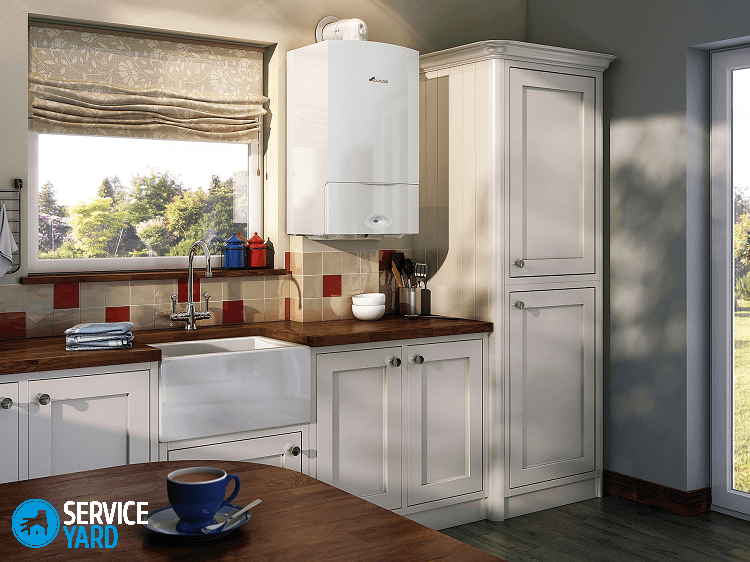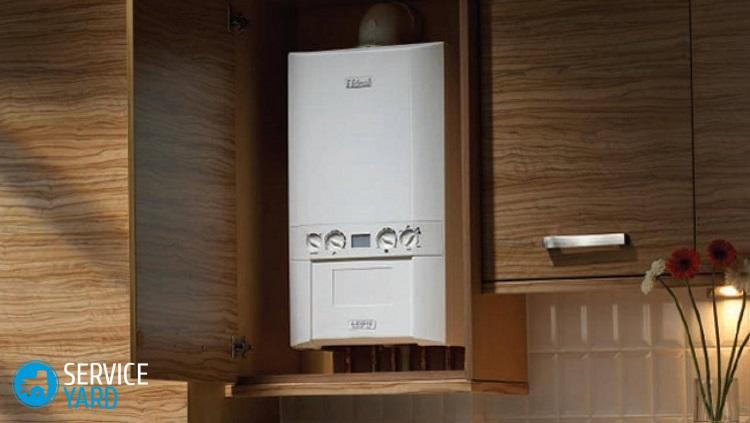How to remove the heat exchanger from the gas column?

Any gas-fired water heater needs periodic cleaning and maintenance. These procedures significantly extend the life of such devices, which is why it is recommended that they be performed at least once a year. In addition, it will facilitate the process of removing carbon deposits and scale from the inside and outside of the heat exchanger. Unfortunately, most users take such measures after the heater starts to fail. In this article we will tell you how to remove the heat exchanger from the gas column, give the main signs of apparatus pollution and tell you how to clean the units on their own.
to contents ↑Why is there a need for cleaning gas columns?
Before you figure out how to clean the Neva gas column or any other manufacturer, you need to understand when that moment comes and such measures should be taken urgently.
Contamination inside the device comes in three forms:
- The soot, which is formed during the combustion of gas. The nozzles are clogged with soot, it accumulates on the heat exchanger, thereby impairing the draft and heating of the water.
- Contamination present in tap water. A certain part of them settles on the filter grids, and because of this, its throughput is significantly reduced. Impurities that have overcome the filtration barrier accumulate on the membrane, as a result of which it ceases to respond normally to pressure changes, and the gas valve ceases to completely close.
- Scum. This is the most common problem that arises due to the crystallization of calcium and magnesium salts dissolved in water, and the higher the temperature, the faster this process occurs.
Important! The tubes of the heat exchanger are specially made thin to ensure the fastest possible heating of the water, so they quickly become clogged with scale.

To minimize the rate of formation of salt deposits, experts recommend that you follow the recommendations below:
- Do not overheat the column too much. It is better that it works as usual, then you do not have to dilute the hot water with cold.
- In modern columns, there is no need to drill a filter, as in home-grown appliances, since it starts to generate excessive heat - because of this, the water inside the heat exchanger becomes hot when the main burner is not working.
- If the water contains a lot of magnesium and calcium salts, it is better to install a softening filter in front of the column.
When is it time to clean the gas water heater urgently?
There are a number of signs indicating that descaling should be done as soon as possible, that is, too much dirt has accumulated in the water heater.
These include the following:
- Water runs out of a hot tap too slowly, while a strong pressure is observed in a cold tap.
- The column immediately turns off or does not respond to the opening of the hot valve.
- The column has stopped heating water or the overheating sensor is constantly triggering.
- Gas does not reach the burner in sufficient quantity.
- When a chimney is working properly, the column is disabled due to a draft sensor.

How to clean the water intake unit yourself?
Now let's look at how to rinse the heat exchanger of the gas column with our own hands and we will start with the water intake unit. It is located at the inlet of the water supply system of the device, it is equipped with a strainer that prevents clogging of the heat exchanger tubes with various deposits and rust particles, and also has a membrane that is responsible for the automatic gas supply when the valve is turned on.
The following must be done to clean the intake unit:
- Remove the assembly from the heater body.
- Loosen the connecting screws, open the housing.
- Clean the filter, rinse it under high pressure.
- Check the membrane. It should be in perfect condition flat, but if concavity is observed on it, then this indicates that it has worn out and needs to be replaced.
Important! The original membrane can be replaced with modern silicone, which has a long service life.
- Close the cover of the water intake unit, fasten the screws, and then alternately tighten the diametrically opposite pairs of screws. Thus, you will ensure uniform tension of the membrane.

How to clean the heat exchanger?
In this section, we will tell you how and how to rinse the gas column heat exchanger at home. A number of actions will be required:
- Disconnect the tubes at the inlet and outlet of the water in the device. If you conduct such events irregularly, most likely, the fastening nuts will be clogged with scale, which prevents them from disconnecting. In this situation, use a special liquid that is sold in any car shop. Use a grease nipple to bury it in the joints of the nuts, wait 15 minutes and calmly loosen the nuts.
- Remove the heat exchanger, pour in descaling agent using a funnel. To do this, you can use a solution consisting of 0.5 l of hot water and 100 g of citric acid.
Important! Cleaning can also be done with nine percent table vinegar diluted with water in a ratio of one to three. Leave the solution in the heat exchanger overnight.
- Drain the solution, rinse the heat exchanger thoroughly. If you do not remove all the scale that has escaped from the walls, then it will clog the tubes of the device, so rinse it under strong pressure of running water.
- Replace the washed heat exchanger, tighten the fastening nuts, but before doing this, replace the gaskets.

How to remove carbon deposits and scale from the walls of a water heater?
It is impossible to completely disassemble the gas part of the column on its own, unlike its plumbing part. Representatives of the city gas service should deal exclusively with such work. Therefore, let's get acquainted with how to clean the radiator of the gas column yourself.
Follow the steps below to remove accumulated soot from the burner nozzles:
- Take a thin copper wire, clean the jets.
- Sweep the soot with a wire brush.
- Check the column for gas leaks immediately. Prepare a soap solution, apply it to the joints of the units and gas pipes. If there is a leak, then this will be indicated by bubbles formed at the joints. If it suddenly appears, it is urgent to call a representative of the gas service.
Stock footage
Now you know how to descale the radiator of the geyser and flush the heat exchanger yourself. As it turned out, this is a very simple matter, the main thing is to properly disassemble the device and then assemble it. In order to negate the need for column cleaning, it is better to periodically carry out prophylaxis.
- How to choose a vacuum cleaner taking into account the characteristics of the house and coatings?
- What to look for when choosing a water delivery
- How to quickly create comfort at home - tips for housewives
- How to choose the perfect TV - useful tips
- What to look for when choosing blinds
- What should be running shoes?
- What useful things can you buy in a hardware store
- Iphone 11 pro max review
- Than iPhone is better than Android smartphones



